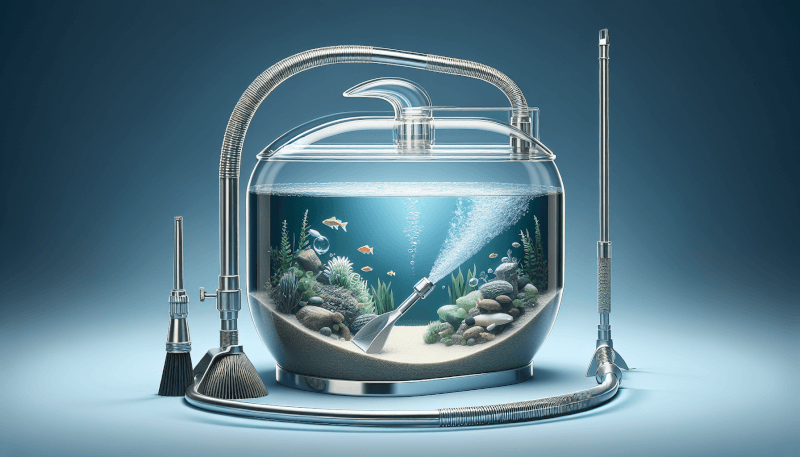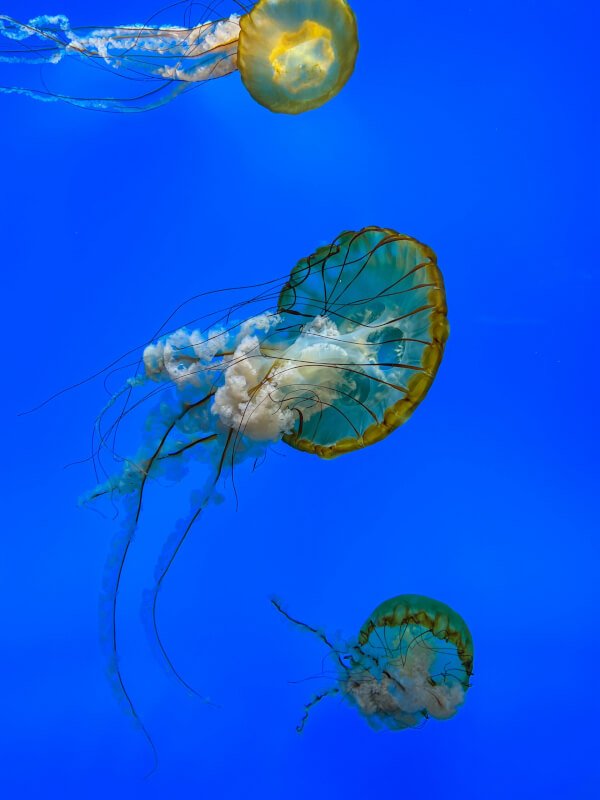Maintaining a clean and beautiful aquarium doesn’t have to be a daunting task. With these easy and effective cleaning tips, you can effortlessly elevate the aesthetics of your aquarium and create a stunning underwater world. From proper filter maintenance to regular water changes, this article will provide you with the essential steps and techniques to keep your aquarium looking its best. Dive into our guide and discover the secrets to achieving and maintaining gorgeous aquarium aesthetics.
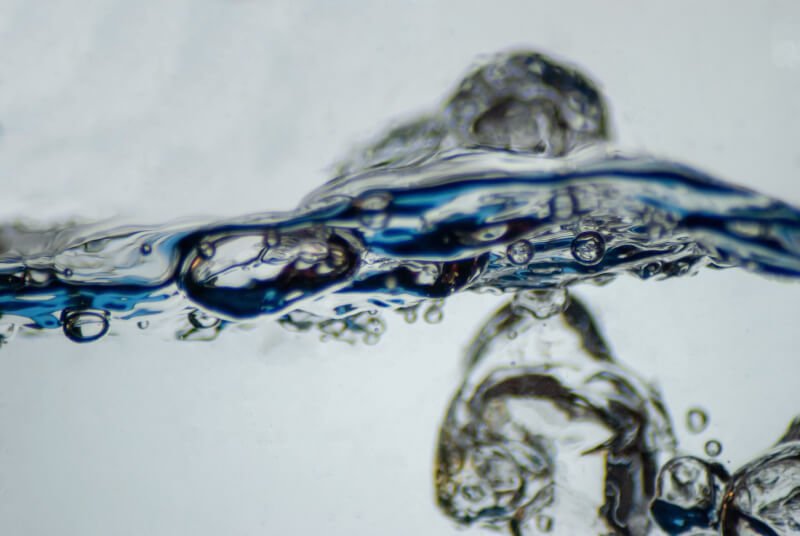
Choosing the Right Cleaning Equipment
Considerations for Aquarium Cleaning Tools
When it comes to maintaining a clean and healthy aquarium, having the right equipment is crucial. There are a few factors to consider when choosing cleaning tools for your aquarium. First and foremost, you need to ensure that the tools you select are safe for your aquatic environment. Some cleaning products can be toxic to fish, so it’s important to opt for aquarium-specific cleaning tools that are designed for use in fish tanks. Additionally, consider the size and type of your aquarium. Larger tanks may require longer cleaning tools, while smaller tanks may benefit from more compact options. Lastly, think about the materials of the tools. Look for those made from non-toxic and non-abrasive materials to protect the delicate surfaces of your aquarium.
Essential Cleaning Equipment for Aquariums
To keep your aquarium looking its best, there are a few essential cleaning tools that every aquarium owner should have. A reliable glass cleaner is a must-have for maintaining crystal-clear viewing panels. Look for a cleaning tool with a long handle and a soft pad or brush to prevent scratches. A gravel cleaner is another essential tool for removing debris from the substrate without disturbing the gravel itself. It’s also a good idea to invest in a quality filter cleaning tool to keep your filter running optimally. Finally, consider having a set of nets on hand for removing debris and relocating fish if necessary. These basic cleaning tools will help you maintain a clean and beautiful aquarium.
Regular Water Changes
Importance of Regular Water Changes
Regular water changes are a crucial aspect of aquarium maintenance. They help remove toxins, excess nutrients, and waste products that can accumulate over time. By replacing a portion of the water, you help maintain a healthier and more stable environment for your aquatic pets. Water changes also help control the growth of algae, which can be detrimental to the overall aesthetics of your tank. Moreover, regular water changes can prevent the build-up of harmful substances that can lead to the development of diseases or infections. It’s important to remember that the frequency and volume of water changes can vary depending on the size of your aquarium, the number of fish, and the type of filtration system you have.
How Often to Change Aquarium Water
The frequency of water changes depends on several factors, including the size of your aquarium, the number and size of fish, and the quality of your water. As a general guideline, you should aim to change approximately 10-20% of the water in your aquarium every 1-2 weeks. However, it’s important to monitor the water parameters regularly to determine if more frequent or larger water changes are needed. If you notice a significant increase in ammonia or nitrate levels, or if your fish appear stressed or unhealthy, it may be necessary to increase the frequency of water changes. Conversely, if your tank is heavily planted and well-established, you may be able to get away with less frequent water changes. Remember, each aquarium is unique, so it’s important to find a water change schedule that works best for your specific tank.
Cleaning the Glass
Tools for Cleaning the Aquarium Glass
The glass panels of your aquarium provide a window into the underwater world, so it’s important to keep them clean and free from algae and other residue. Fortunately, there are various tools available to make glass cleaning a breeze. One popular option is a magnetic glass cleaner, which consists of two magnetic pieces that sandwich the glass, allowing you to clean the inside and outside simultaneously. Another tool to consider is an algae scraper. These handheld devices usually have a razor blade or scrubbing pad attached to them, making it easy to remove stubborn algae growth. Additionally, you can use a soft-bristled toothbrush or a dedicated glass cleaning pad to gently scrub away any residue. Remember to choose tools that are appropriate for the thickness of your aquarium glass to avoid any accidental damage.
Techniques for Effectively Cleaning the Glass
To effectively clean the glass of your aquarium, start by removing any large debris or plants from the area you’re about to clean. This will prevent any accidental scratching or damage to the aquatic life in your tank. Once you’ve prepared the area, choose your preferred cleaning tool and dampen it with aquarium water. Using horizontal or vertical strokes, gently scrub the glass to remove any algae or residue. Be cautious not to use excessive force, as this can lead to scratching. If you encounter stubborn algae growth, you can use a razor blade scraper or a more abrasive pad, but be careful not to apply too much pressure. After cleaning, use a clean cloth or sponge to wipe away any excess water and ensure a streak-free finish. Regular glass cleaning will keep your aquarium looking its best and provide an unobstructed view of your aquatic friends.
Maintaining a Clean Filter
Understanding the Importance of a Clean Filter
A clean filter is essential for the overall health and well-being of your aquarium. The filter plays a vital role in removing harmful substances and maintaining water quality. It helps remove excess nutrients, organic waste, and debris, keeping the water clean and clear. Moreover, a clean filter prevents the accumulation of toxic compounds, such as ammonia and nitrate, which can harm your fish and other aquatic inhabitants. By maintaining a clean filter, you ensure optimal water conditions and reduce the risk of diseases and infections. Remember, the better the filtration system, the happier and healthier your aquarium will be.
How to Clean Different Types of Filters
The process of cleaning your aquarium filter will depend on the type of filter you have. Here are some general guidelines for the most common types:
Mechanical Filters: These filters typically contain filter pads or sponges that trap debris and waste. To clean a mechanical filter, start by turning off the filter and removing the filter media. Rinse the media under running water or in a bucket of aquarium water to remove any accumulated debris. Avoid using tap water, as it can contain chlorine or chloramine, which can harm beneficial bacteria. Gently squeeze the media to dislodge any trapped debris, then reassemble the filter and turn it back on.
Chemical Filters: Chemical filters, such as activated carbon or zeolite, remove impurities and odors from the water. These filters need to be replaced periodically rather than cleaned. Follow the manufacturer’s recommendations for the specific type of chemical filter you are using.
Biological Filters: Biological filters, such as bio-wheels or sponge filters, contain beneficial bacteria that help break down harmful substances in the water. It’s important not to clean these filters too extensively, as you don’t want to disrupt the beneficial bacteria colony. To clean a biological filter, gently rinse the filter media in a bucket of aquarium water to remove any loose debris. Avoid using tap water, as it can contain chlorine or chloramine that can harm the bacteria. It’s generally recommended to clean biological filters less frequently than mechanical filters to preserve the beneficial bacteria.
Remember, when cleaning any type of filter, it’s important to work gently to avoid damaging the filter media or disrupting the bacteria colonies. Always refer to the manufacturer’s instructions for your specific filter for the best cleaning practices.
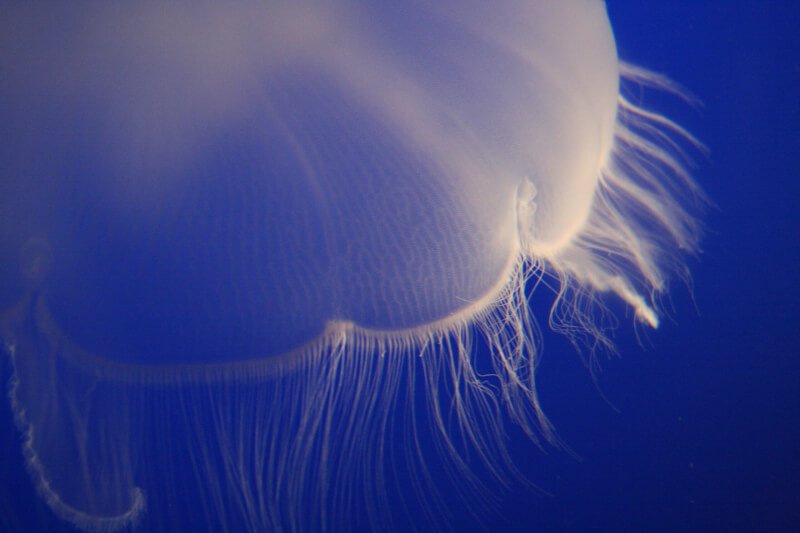
Removing Debris from Gravel
Effective Ways to Clean Gravel in an Aquarium
Gravel not only adds aesthetic appeal to your aquarium but also provides a habitat for beneficial bacteria and helps maintain a healthy ecosystem. However, debris can accumulate in the gravel, compromising the water quality and overall cleanliness of your tank. Here are a few effective methods for cleaning the gravel in your aquarium:
Gravel Vacuuming: A gravel vacuum is a valuable tool for removing debris from the substrate without disturbing the gravel. Start by submerging the vacuum in the aquarium, allowing water to fill the tube. Move the vacuum gently across the gravel, being careful not to disturb the plants or gravel bed. The vacuum will siphon out the debris while allowing clean water to return to the tank.
Spot Cleaning: If you notice specific areas with excessive debris or waste, spot cleaning can be effective. Use a fine mesh net or a dedicated gravel cleaner to target those areas directly. Gently scoop out the debris without disturbing the surrounding gravel or plants.
Raking Method: For aquariums with larger gravel or small pebbles, a small aquarium rake can be used to gently rake the top layer of gravel. This method helps loosen and remove any debris or uneaten food that may have settled on the surface, promoting a cleaner and healthier environment.
Remember to clean the gravel periodically to prevent the accumulation of debris and ensure a clean and visually appealing aquarium.
Choosing the Right Gravel Cleaner
When selecting a gravel cleaner for your aquarium, consider the size of your tank and the type of gravel you have. For larger tanks, opt for a longer gravel cleaner to reach all areas easily. Similarly, if you have a deep gravel bed, choose a cleaner that can reach the bottom without difficulty. Some gravel cleaners come with adjustable flow rates, which allow you to control the strength of suction. This is particularly useful if you have delicate plants or small shrimp in your tank. Additionally, consider the material of the gravel cleaner. Look for a non-toxic and non-abrasive option to avoid any harm to your aquatic life. Lastly, read reviews and recommendations from other aquarium enthusiasts to help you make an informed decision about which gravel cleaner will work best for your specific needs.
Cleaning Artificial Decorations
Methods for Cleaning Artificial Decorations
Artificial decorations not only enhance the visual appeal of your aquarium but also provide hiding spots for your fish. However, over time, these decorations can accumulate algae and other unsightly residue. Here are a few methods for effectively cleaning artificial decorations:
Manual Scrubbing: One of the simplest and most effective ways to clean artificial decorations is by manually scrubbing them with a soft-bristled brush or sponge. Use an aquarium-safe cleaning solution or simply dip the brush or sponge in warm water. Gently scrub the decorations, paying particular attention to areas with visible algae or dirt. Rinse them thoroughly under running water before placing them back in the aquarium.
Bleach Soak: For more stubborn algae growth, a bleach soak can be used. Fill a container with water and add a small amount of bleach (approximately 1 part bleach to 19 parts water). Submerge the decorations in the solution and let them soak for 15-30 minutes. Rinse them thoroughly under running water to remove any traces of bleach before returning them to the tank. It’s important to note that bleach can be harmful to fish and other aquatic life, so make sure to rinse the decorations thoroughly.
Boiling Method: Another effective method for cleaning artificial decorations is boiling. Place the decorations in a pot of boiling water and let them simmer for 10-15 minutes. The high temperature will kill any algae or bacteria, leaving the decorations clean and sanitized. After boiling, carefully remove the decorations from the water and allow them to cool before placing them back in the aquarium.
Remember to always handle artificial decorations with care to avoid any accidental damage. Also, remove any large debris or plants from the decorations before cleaning to prevent scratching or tangling.
Preventing Algae Build-up on Decorations
To prevent algae build-up on artificial decorations, it’s important to establish a regular cleaning routine and maintain a balanced ecosystem in your aquarium. Here are a few tips to help reduce algae growth on decorations:
Proper Lighting: Algae thrives on excessive light, so it’s important to provide appropriate lighting conditions for your aquarium. Avoid exposing your tank to direct sunlight or keeping the lights on for extended periods. Use a timer to ensure consistent and controlled lighting for the recommended number of hours per day.
Proper Nutrient Levels: Algae growth can be fueled by excess nutrients in the water. Make sure you’re not overfeeding your fish and regularly remove any uneaten food. Regular water changes and proper filtration will help maintain optimal nutrient levels in the aquarium.
Algae-Eating Fish or Snails: Consider adding algae-eating fish, such as Otocinclus catfish or Siamese algae eaters, to your aquarium. These species can help control algae growth by grazing on surfaces, including decorations. Additionally, certain species of snails, like Nerite snails, are known for their voracious appetite for algae.
By implementing these preventative measures and regularly cleaning your artificial decorations, you can create an aesthetically pleasing aquarium free from excessive algae growth.
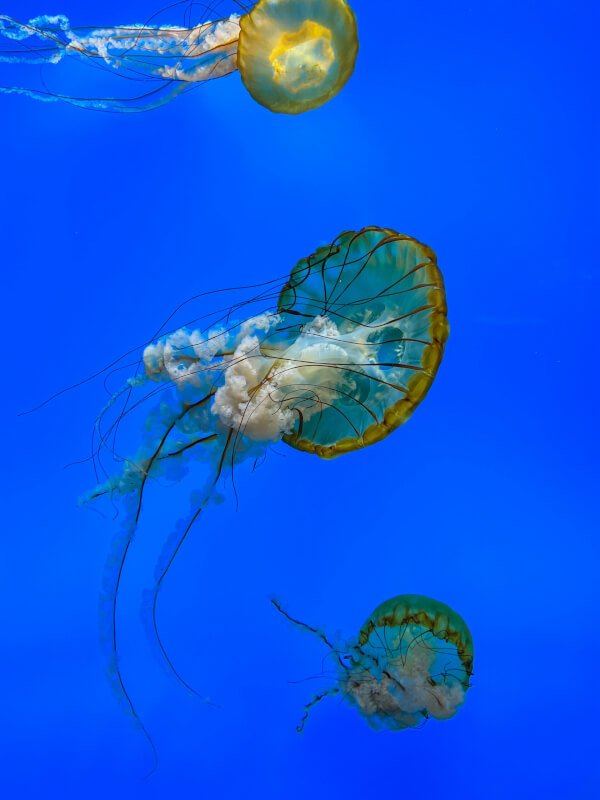
Properly Maintaining Live Plants
Benefits of Live Plants in Aquariums
Live plants not only add beauty and natural aesthetics to your aquarium but also provide numerous benefits for the overall health of your aquatic ecosystem. Here are a few advantages of incorporating live plants into your aquarium:
Improved Water Quality: Live plants help absorb excess nutrients, such as ammonia and nitrate, through a process called photosynthesis. This can help maintain a more stable and balanced ecosystem, reducing the risk of algae overgrowth and promoting clearer water.
Oxygenation: During photosynthesis, live plants release oxygen into the water. This benefits your fish and other aquatic inhabitants by enhancing oxygen levels and promoting a healthy and thriving environment.
Natural Habitat and Hiding Spots: Live plants provide a natural and realistic habitat for your fish, mimicking their natural environment. They also offer hiding spots and shelter for shy or territorial fish.
Alleviating Stress: The presence of live plants can help reduce stress in your fish, promoting their overall health and well-being. The plants provide shade and protection, creating a calming and secure environment.
Tips for Cleaning and Maintaining Live Plants
While live plants offer numerous benefits to your aquarium, they also require regular maintenance to thrive. Here are some tips for cleaning and maintaining live plants:
Pruning and Trimming: Regularly prune and trim your plants to remove any dead or decaying leaves. This helps maintain the overall health of the plant and prevents the accumulation of debris in the aquarium.
Inspect for Pests: Periodically inspect your plants for any signs of pests, such as snails or algae. If you notice any unwanted visitors, take appropriate measures to remove or control them. Introducing pest-eating fish or snails can be an effective natural solution.
Avoid Overdosing with Fertilizers: Live plants require essential nutrients for healthy growth. However, it’s important not to overdose your aquarium with fertilizers, as it can lead to algae overgrowth. Follow the recommended dosage and use fertilizers specifically formulated for aquatic plants.
Ensure Adequate Lighting: Live plants require proper lighting to undergo photosynthesis and thrive. Use aquarium-specific lighting fixtures and maintain a consistent lighting schedule to ensure optimal conditions for plant growth.
By incorporating these cleaning and maintenance practices into your aquarium routine, you can enjoy the beauty and benefits of live plants in a clean and healthy environment.
Preventing Algae Growth
Understanding Algae Growth in Aquariums
Algae growth is a common issue in aquariums and can be quite unsightly. Understanding its causes can help you prevent and control algae growth effectively. Some factors that contribute to algae growth include:
Excessive Nutrients: Algae thrive on nutrients, such as ammonia, nitrite, and phosphate. Imbalanced nutrient levels in the water can provide the perfect conditions for algae to grow and spread.
Lighting: Algae require light for photosynthesis, so excessive lighting or prolonged exposure to direct sunlight can fuel algae growth. Improper lighting duration or intensity can create an imbalance in the aquarium ecosystem, leading to an overgrowth of algae.
Poor Water Circulation: Insufficient water circulation can lead to stagnant areas in the aquarium, allowing nutrients and debris to accumulate. These stagnant areas provide the ideal conditions for algae growth.
Overfeeding: Overfeeding your fish can lead to excess waste and uneaten food in the aquarium. Decomposing organic matter provides a food source for algae.
Methods to Prevent and Control Algae
Preventing and controlling algae growth requires a proactive approach and consistent maintenance. Here are some methods to help you keep algae in check:
Maintain Proper Lighting: Use a timer to ensure a consistent lighting schedule that mimics natural daylight. Avoid excessive lighting or too much direct sunlight. Find the right balance based on the needs of your tank inhabitants and the type of plants you have.
Regular Water Testing and Water Changes: Regularly test the water parameters, such as ammonia, nitrite, nitrate, and phosphate levels. If any of these parameters are elevated, perform regular water changes to dilute the excess nutrients and remove accumulated waste.
Proper Filtration and Water Circulation: Ensure you have an adequate filtration system and proper water circulation in your aquarium. A good filtration system helps remove excess nutrients and debris, preventing them from feeding algae growth. Maintaining proper water circulation helps distribute oxygen and nutrients evenly throughout the tank.
Avoid Overfeeding: Feed your fish an appropriate amount of food, and remove any uneaten food after a few minutes. Overfeeding can lead to excess waste and contribute to algae growth.
Introduce Algae-Eating Fish or Invertebrates: Consider adding algae-eating fish, such as Siamese algae eaters or algae-eating shrimp, to help control algae naturally. These species can help keep algae growth in check by grazing on surfaces and consuming algae.
Remember that some types of algae are normal and even beneficial for the ecosystem of your aquarium. However, if you notice excessive or unsightly algae growth, implementing these preventive measures can help you maintain a clean and visually appealing aquarium.
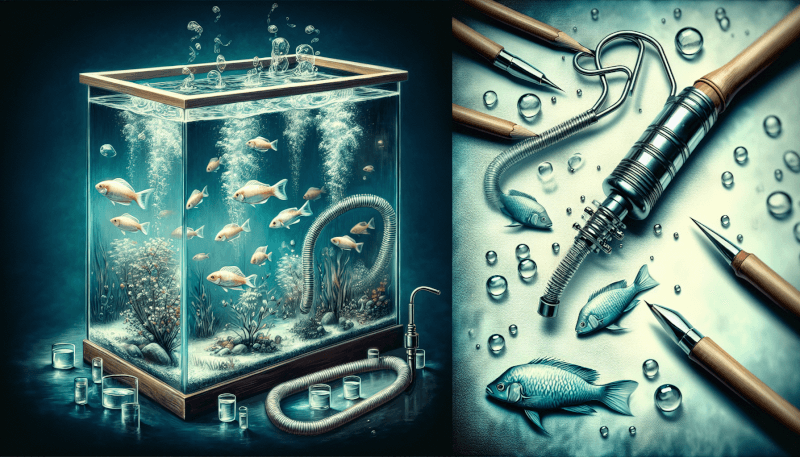
Maintaining Optimal Water Parameters
The Importance of Water Parameters in Aquariums
Maintaining optimal water parameters is crucial for the overall health and well-being of your aquatic inhabitants. Imbalanced or poor water quality can lead to stress, diseases, and even death of your fish. Here are some key parameters to monitor and maintain:
Temperature: Different fish species have specific temperature requirements. It’s important to maintain a stable and appropriate temperature range for your aquarium. Use a reliable aquarium thermometer and a heater or chiller to regulate the temperature as needed.
Ammonia, Nitrite, and Nitrate Levels: High levels of ammonia and nitrite can be toxic to fish, while elevated nitrate levels can lead to algae overgrowth. Regularly test the water parameters and perform water changes as necessary to keep these levels in check.
pH: pH measures the acidity or alkalinity of the water. Different fish species have varying pH requirements, so it’s important to ensure the pH level is within the suitable range for your fish. Test the pH regularly and adjust using appropriate buffer solutions if needed.
Hardness (GH and KH): Water hardness refers to the mineral content of the water. It’s important to maintain an appropriate hardness level for your specific fish species. Test the general hardness (GH) and carbonate hardness (KH) regularly and adjust as necessary using suitable products.
Tips and Tricks for Maintaining Ideal Water Parameters
Maintaining ideal water parameters requires regular monitoring and consistent maintenance. Here are some tips and tricks to help you achieve and maintain optimal water quality:
Regular Water Testing: Invest in a reliable water testing kit and test the water parameters regularly. Create a schedule to ensure the tests are performed consistently and record the results in a log for future reference.
Perform Regular Water Changes: Regular water changes play a vital role in maintaining optimal water quality. They help remove accumulated toxins, excess nutrients, and waste products. Aim to change approximately 10-20% of the water every 1-2 weeks, but adjust the frequency and volume based on the specific needs of your aquarium.
Use a Quality Filtration System: A good filtration system is essential for maintaining optimal water quality. Make sure your filtration system is properly sized for your aquarium and regularly clean or replace the filter media as recommended by the manufacturer.
Avoid Overstocking: Overcrowding your tank can lead to poor water quality due to excessive waste production. Consider the adult size and habitat requirements of your fish before adding them to your aquarium. Be mindful of the bioload and ensure your filtration system can handle the waste production.
Keep an Eye on Fish Behavior and Appearance: Monitoring your fish regularly can give you valuable insights into the overall health of your aquarium. Look for signs of stress or illness, such as changes in appetite, unusual swimming behavior, or physical abnormalities. Promptly address any issues to prevent the deterioration of water quality.
Remember, each aquarium is unique, and the specific water parameters may vary depending on the types of fish and plants you have. Research the ideal water parameters for your specific tank inhabitants and adjust your maintenance routine accordingly.
Dealing with Diseases and Infections
Recognizing and Treating Common Aquarium Diseases
As an aquarium owner, it’s important to be aware of common diseases that can affect your fish and other inhabitants. Here are some common aquarium diseases to watch out for:
Ich (White Spot Disease): Ich is a parasitic disease that causes small white spots to appear on the fish’s body and fins. Infected fish may show signs of scratching or rubbing against objects. Treatments include increasing the tank temperature and using medications specifically designed to kill the ich parasite.
Fin Rot: Fin rot is a bacterial infection that affects the fins and tail of fish. Affected fins may appear frayed, discolored, or develop holes. To treat fin rot, perform water changes, maintain good water quality, and use antibacterial medications as recommended.
Velvet Disease: Velvet disease is caused by a parasitic organism that coats the fish in a fine, gold or rust-colored dust. Infected fish may exhibit signs of lethargy, loss of appetite, and flashing. Treating velvet disease involves removing carbon from filters, raising the water temperature, and using medication specifically formulated to target the parasite.
Columnaris: Columnaris, also known as cotton mouth disease, is a bacterial infection that can cause white, thread-like growths on the fish’s body. Infected fish may appear lethargic and develop ulcers or sores. To treat columnaris, maintain good water quality, isolate infected fish, and use antibiotics as prescribed.
Precautions and Preventive Measures to Avoid Infections
Preventing diseases and infections in your aquarium is the key to maintaining a healthy and thriving aquatic community. Here are some preventive measures to follow:
Quarantine New Additions: Before introducing new fish or other inhabitants to your aquarium, quarantine them in a separate tank for at least a few weeks. This allows you to observe them for any signs of disease or infection before introducing them to your main tank.
Maintain Good Water Quality: Regularly test the water parameters and perform water changes as necessary to maintain optimal water quality. Poor water quality can weaken the fish’s immune system, making them more susceptible to diseases.
Provide a Balanced Diet: Feeding your fish a balanced and nutritious diet helps boost their immune system and overall health. Choose high-quality fish food and include a variety of food types to ensure they receive all the necessary nutrients.
Avoid Stressful Conditions: Take measures to reduce stress in your aquarium, as stress weakens the fish’s immune system. Provide appropriate hiding spots, maintain suitable water parameters, and avoid sudden changes in temperature or lighting.
Practice Good Hygiene: Wash your hands thoroughly before and after handling anything related to your aquarium. This helps prevent the transmission of any potential pathogens.
By implementing these precautions and promptly treating any signs of disease or infection, you can minimize the risk and impact of diseases in your aquarium.
In conclusion, maintaining a clean and healthy aquarium requires the right combination of cleaning equipment, regular maintenance, and preventive measures. By choosing the right tools and following effective cleaning techniques, you can keep the glass, filter, gravel, decorations, and live plants in your aquarium looking their best. Additionally, understanding the importance of water parameters, preventing algae growth, and addressing diseases and infections are crucial for ensuring the overall well-being of your aquatic inhabitants. By dedicating time and effort to proper cleaning and maintenance, you can create a stunning and thriving aquarium that brings joy and beauty to your home.
